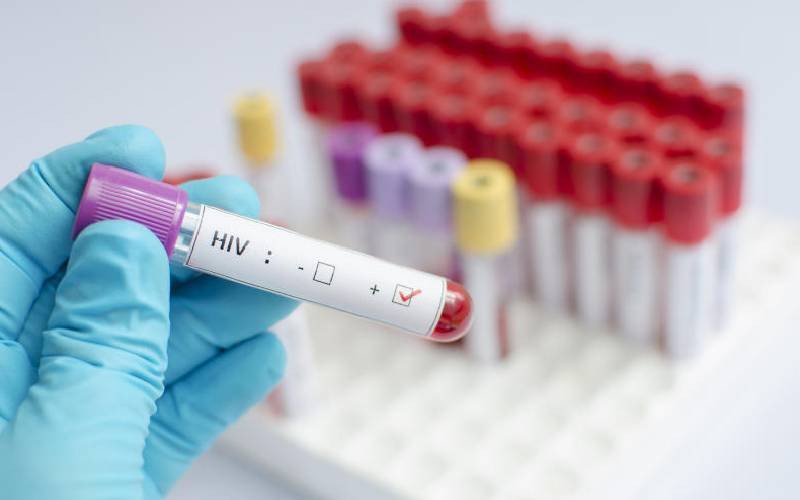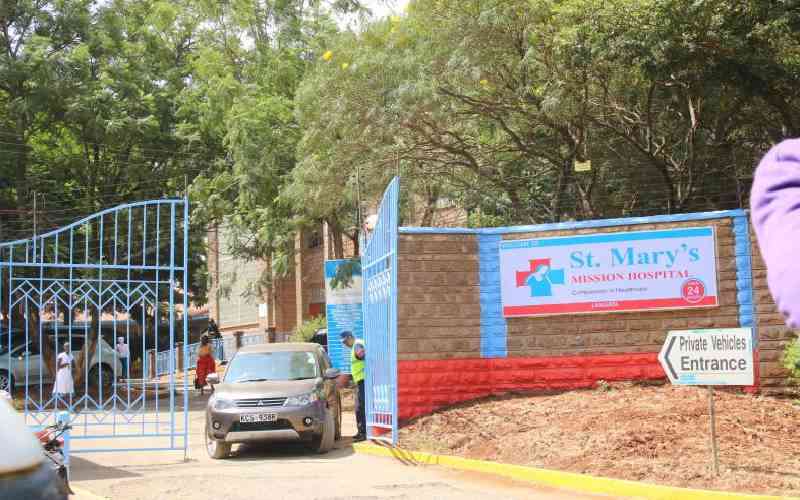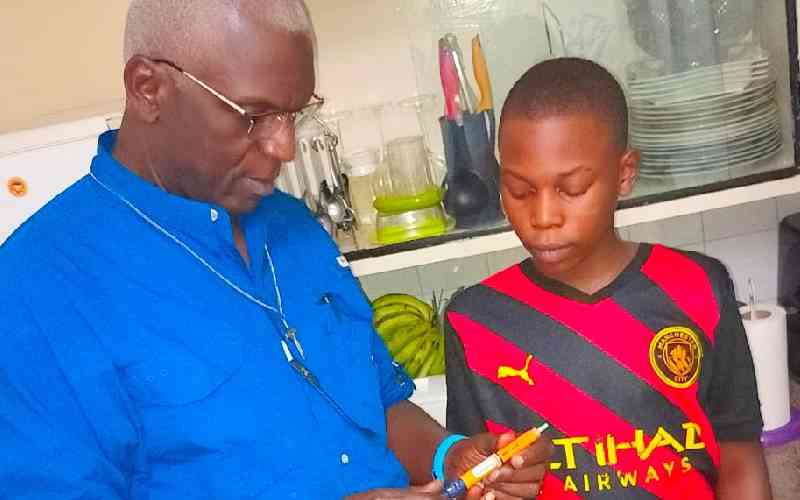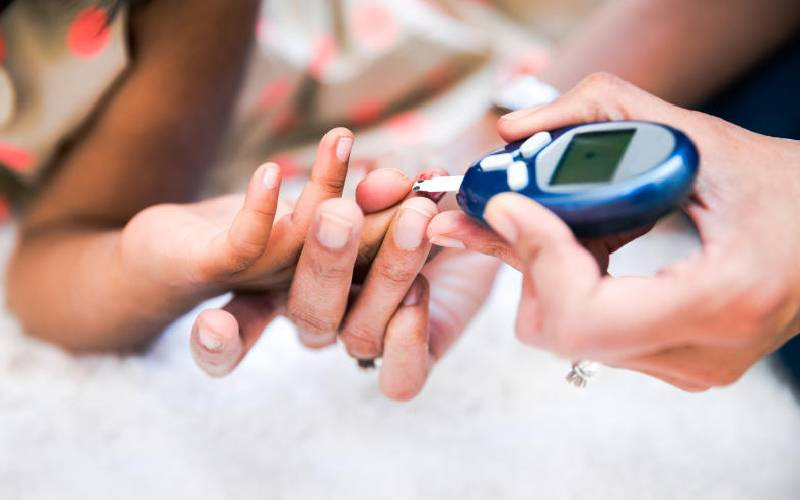
Faith, 23, is on the verge of despair after being unable to check her HIV viral load for the second time this year.
“Since they drew blood to test the viral load in January, the next time I was to be tested again was in June, but apparently, I was told that the testing kits are not available,” says a Kayole resident who has been living with HIV for four years.
According to Ministry of Health guidelines, once a person is placed on antiretroviral therapy (ART), their viral load should be checked at least once a year to monitor treatment progress.
A suppressed viral load (below 1000 copies/ml) indicates effective treatment, while an unsuppressed viral load requires repeat testing every three months to determine whether poor adherence or treatment failure is the cause.
For Faith, a mother of one, the challenge is compounded by recent life changes.
She ended the relationship with her HIV-negative partner in February, citing fear of infection following the shortage of PrEP after US funding cuts to the global AIDS response.
- Ministry, governors clash over ghost workers in health payroll
- Diabetes, hypertension silent killers in rural areas - medics
- High Court halts health ministry's nicotine ban directive
- Busia, Mombasa, Nakuru lead as Mpox cases hit 137
Keep Reading
“I have started a new relationship with a positive partner. I am not sure of my new partner, and now I don't know how well the drugs are helping me as I look forward to having more children,” she reveals.
Her dream of having more children is dim, weighed down by the reality of managing her viral load.
Samuel Barasa, a clinician at Pumwani Majengo Dispensary Comprehensive Care Clinic, says Faith must now take time before trying for a baby.
“Both Faith and her partner have to be consistent with ART and confirm that their viral loads are undetectable before trying for pregnancy. This protects them from re-infection with resistant strains and reduces the baby’s risk of contracting HIV,’ explains Barasa.
He urges the couple to embrace condom use in the meantime to prevent transmission of resistant HIV strains and other sexually transmitted infections (STIs).
Barasa acknowledges that viral load testing is a critical part of HIV care.
It helps clinicians assess treatment effectiveness and detect early signs of drug resistance.
However, facilities like the one he works at are facing shortage of reagents and kits, forcing them to delay tests or prioritise the most at-risk patients.
“Since the year 2025 began, we started well with the tubes, and by May, the tubes were out of stock up to date. So we have been focusing on viremic patients,” says Barasa.
He says that since then, he has only received 20 tubes in June, which could not serve the hundreds of patients under the facility.
“The last time I called the technical advisor, he said the testing reagents were out of stock. Right now, we are operating in darkness; we are only relying on symptoms. Basically, we are relying on history, which is a bit easier with adults but not youths,” he adds.
He emphasises that treating patients without up-to-date viral load results is a gap that puts the patients in limbo.
Barasa expresses fear following a shortage of the second-line ART regimen, a problem experienced from last year until the stop-work order period.
During shortages, the supply of the drugs to patients was being regulated based on their line of regimen, which is also determined by the viral load test results.
“So a client who was on the second line and has a viral load status which is suppressed, in a time frame of 12 months, is taken to the second line of the first line. We rely on previous viral load done,” he explains, outlining why it would be difficult to change regimens now.
Barasa says that facilities have experienced challenges since the US stop-work order, especially to HIV programmes which were under the President’s Emergency Plan for Aids Relief (PEPFAR) fund.
PEPFAR supports HIV treatment and care, including the supply of lab equipment, reagents, and testing kits.
“During that time, we noticed a surge in sexually transmitted infections, especially in May, April, and March, probably as a result of low preventive measures like condoms, but so far they have declined,” Barasa says.
Faith's is not alone; 19-year-old Willy is equally worried about his status.
“I have only been tested once this year for the viral load. They keep telling me to come back and check by next month,” he says
“I am scared because I don’t know if my medicine is still helping me. I take my drugs faithfully, but without the test, I have no peace of mind.”
The two youths are just among thousands of Kenyans living with HIV who are grappling with nationwide shortage of viral load testing kits.
National Empowerment Network of People living with HIV(NEPHAK) Chief Executive Officer Nelson Otwoma, says the shortage of medical supplies began long after the US funding pause order, despite partial resumption of laboratories, CD4 and other HIV lab tests are not operational.
“At the moment, community-led monitoring from NEPHAK has confirmed that viral load testing and early infant diagnostics (EID) have stopped because of a lack of supplies and specifically a lack of PPT Tubes,” says Otwoma
NEPHAK has raised the issue with the National AIDS and STI Control Programme (NASCOP) and the Ministry, but no public statement or directive has been issued.
Otwoma further reveals that the CD4 tests have also not been done since January, as some facilities introduce costs for lab tests.
HIV usually targets and destroys a type of white blood cell (CD4 cells), weakening the immune system.
While viral load is now recognised as the primary tool for monitoring treatment response, NASCOP still recommends CD4 testing every 6-12 months during the first two years of taking ART.
Otwoma warns that without the CD4 test or viral load test, it will be difficult for medics to identify patients with advanced HIV.
“Since July, people living with HIV have not been testing their viral loads, including newborns”.
“When stock-outs start to happen in laboratories and diagnostics, it causes a lot of anxiety because you don’t know what will be in stock-out next,” he adds
He says patients are concerned that the HIV testing has now been moved to the antenatal clinics, which men have a challenge accessing.
Head of NASCOP Andrew Mulwa, expresses concern over the war on HIV, even as the country races towards ending new HIV infections and AIDS related deaths.
“We have more persons living with HIV who are not virally suppressed, and, therefore, we have an undetectable virus that can spread and are likely to transmit more if they are HIV positive and are not virally suppressed,” he says.
Dr Mulwa notes that more focus has been put on testing and treatment, forgetting the aspect of monitoring the disease.
“Everyone focused on testing, treatment and viral load suppression. We celebrated early, reasons as to why we are seeing a re-emergence of deaths,” he says.
The latest report released by NASCOP reveals that at least 1,378,457 Kenyans are living with HIV, with men accounting for 35 per cent (487,710), against 890,747 women living with the virus.
Out of which, there are 16,752 new HIV infections, and notably, 39per cent of these are among adolescents aged 15–24.
Nelson Akoth, a sexual and reproductive health advocate at the Network for Adolescents and Youth of Africa, expresses concerns about the youth's frustration, noting that the testing is usually seen as proof of a longer life span.
“For young people living with HIV, these results extend far beyond clinical data; they affirm hope, reassurance and the motivation to stay on treatment,” says Akoth.
“The absence of timely test results now weakens their adherence efforts, breeds fear which increases mental health concerns as anxiety, depression and self-stigma is quietly resurfacing”.
Even as Kenya records an 83 per cent decline in new infections, Akoth warns that delayed testing threatens progress towards UNAIDS’ 95-95-95 targets: ensuring 95 per cent of people living with HIV know their status, 95 per cent of those diagnosed are on sustained ART, and 95 per cent of those on ART achieve viral suppression by 2030.
Patients like Faith and Willy are caught between hope and fear— strictly adhering to their daily treatment but uncertain whether it is working.
For them, viral load testing is not just a clinical requirement; it is their only assurance of a healthier future.
The stakeholders now urge the government to ensure adequate funding for procurement and distribution of HIV testing kits, reagents, and lab supplies to avert the looming crisis.
 The Standard Group Plc is a multi-media organization with investments in media
platforms spanning newspaper print
operations, television, radio broadcasting, digital and online services. The
Standard Group is recognized as a
leading multi-media house in Kenya with a key influence in matters of national
and international interest.
The Standard Group Plc is a multi-media organization with investments in media
platforms spanning newspaper print
operations, television, radio broadcasting, digital and online services. The
Standard Group is recognized as a
leading multi-media house in Kenya with a key influence in matters of national
and international interest.











